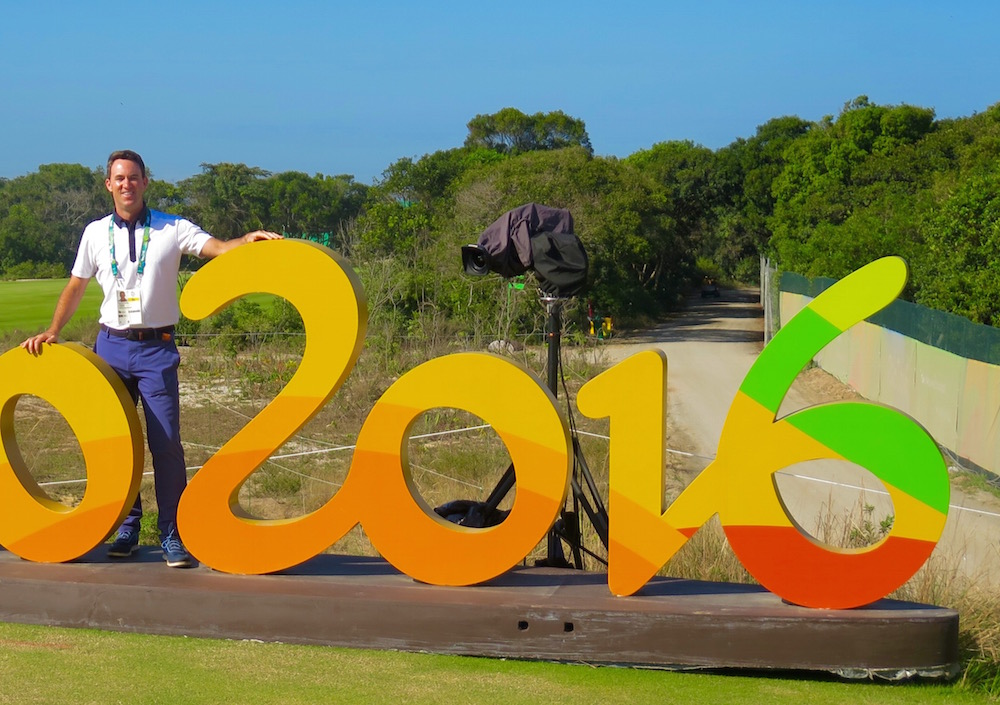Roundup 2016: Year In Review Stories And A Few Thoughts
/I've been taking in and enjoying the year-end golf summaries, mostly to shield myself from news that makes me want to have John Oliver's '16 tribute on a running loop. As is always the golf media custom, various writers emptied their notebooks and recalled moments that resonated long after they packed up their laptops. While taking in their thoughts I drew a few conclusions, which, if you'll indulge, I'll share before throwing a few good year-end links your way.
 2016 lived up to its billing: a stellar-but-bloated schedule, plenty of sensational tournament venues and a continued refinement of course architectural tastes skewing toward the natural. But the sadness of Arnold Palmer's passing, which I'm not sure we got to completely take in quietly, just reinforced the sense that there is too much golf and it all went on way too long.
2016 lived up to its billing: a stellar-but-bloated schedule, plenty of sensational tournament venues and a continued refinement of course architectural tastes skewing toward the natural. But the sadness of Arnold Palmer's passing, which I'm not sure we got to completely take in quietly, just reinforced the sense that there is too much golf and it all went on way too long.
In spite of the pitiful WD's by Spieth, McIlroy and friends, The Olympics exceeded expectations while The Open Championship will go down as a classic (John Huggan and Dave Shedloski have put together a truncated oral history of Troon 2016).
For Golfweek's Alistair Tait, those were the two biggest takeaways in his eyes and he offers two anecdotes from each.
The women's side keeps producing young talent but now even Lydia Ko is showing signs of impatience that either could propel her to another level, or rapidly add her to a list of almost-legend status. This overall impatience by and for the youth to take center stage should be a more disconcerting sign for golf given how much damage it's done in tennis, but the desperation to ride some under 25-year-old coattails ignores that the average age of the men's major winners in 2016 was..34.
On a grander entertainment scale, fewer players and even fewer fans are clamoring for tournament officials to humiliate players via course setup to compensate for inadequacies in their own golf games. Woohoo! Yes, we still have too many green speed fiascos to mask the distance issue, but we also have fewer four-inch rough weeks and grind-it-out bogey-fests.
This increased clamoring for player-produced drama leads to a more positive energy when we tune in to watch golf. The effect has to seep down to the everyday game, no?
Consider the incredible outrage over the USGA's difficult-to-rationalize handling of Dustin Johnson and how quickly the public response produced a local rule introduction that will restore some sanity (though it still won't slow down greens). A less cynical, more sensible golfing public should take a bow.
The sport saw minor inroads on the pace-of-play plague and with the greatest single roadblock to progress just a few hours from retirement (woohoo 2!), we may see real reform in 2017. I sense an overall shift in values for the sport: golf is no longer seen by its followers as a sport of inevitable punishment separated by bursts of fun. It is now expected to be one that aspires to be a lifestyle activity that is fun, sensible and responsible to be part of. Progress!
Obviously this is generational and the infusion of many "millennial" values has meshed nicely with the "artisanal" trends that had already begun to reimagine design and experiential elements that inspire our passion for the sport. However, I can't help but think of 2016 without thinking of the incessant desperation the sport has shown in trying to appeal to a new generation while ignoring an aging demographic that loves the sport. In trying so pathetically to be cool to the kids the sport so often comes off as pathetic to the kids. If there's one thing we know about millennials, it's that we don't know what they really like. But they have shown a love for pursuits with soul, timelessness and some backbone. Golf should act more comfortable in its shoes.
Ultimately the genius of golf is that it can be played and loved by people of all generations. Probably never a huge audience, but one that spans generations. So perhaps the potential for Tiger Woods and Phil Mickelson to duel one more time with a nice mix of young guns and veteran sticks joining the fight, a microcosm of this cross-generational meeting of minds will calm some of this desperation to get younger or die.
On that note...
If you need your memory refreshed, here are GolfChannel.com's newsmakers, with of course, that passing of Arnold Palmer in the top spot. We lost many others in '16 as Cliff Schrock notes at GolfDigest.com, but it was Palmer's death that will forever define the year.
Randall Mell steps back from the raw emotion of the initial coverage to consider what Palmer's passing means to the game. Brandel Chamblee also weighed in with this piece.
Jeff Babineau covered many topics in his year-end Golfweek.com thoughts, including Palmer's funeral. And GolfChannel.com's Mercer Baggs left the service feeling upbeat, thanks in part to the eulogy by Sam Saunders.
Doug Ferguson uses up his notes that weren't technically newsworthy, just entertaining. And while this Wayne Gretzky item is the best, the theme here is Palmer and he included this one:
The day after the U.S. Open, Arnold Palmer drove his cart to the back entrance of his office in Latrobe, Pennsylvania.
It had been a rough year. Palmer declined to a do his news conference or a TV interview at Bay Hill, instead taping an interview for the NBC telecast. For the first time, he did not hit a ceremonial tee shot at the start of the Masters the following month.
But he was sharp on this day. Dustin Johnson had won the U.S. Open, but only after playing the final seven holes not knowing if the USGA was going to penalize him one shot for his ball moving on the fifth green.
"What did you think of the Open?" Palmer said.
"Interesting," came the fence-sitting reply.
Palmer grinned and, as always, got straight to the point.
"The USGA really (messed) this one up, didn't they?" he said.
Beth Ann Baldry filed her favorite memories from a year on the road covering amateur and women's golf, with the NCAA's in Eugene still resonating strongly. For Mell, Se Ri Pak's emotional retirement cameo was the memory he won't soon forget.
Off the course, the equipment and business side proved fascinating, with more news soon on the way for 2017. David Dusek at Golfweek.com summed it up this way:
Where would you start in a year that included Jordan Spieth cracking the face of his driver on the eve of the Masters, Adidas announcing that it wants to sell TaylorMade, Adams and Ashworth and the USGA and R&A reporting that they don’t feel driving distance is a problem in professional golf?
Which brings us back to the proverbial question that inspired the start of this website 13 years ago and saw it morph into a blog 11 years ago. Will 2017 be the year anything is done? Probably not. But I'm encouraged enough by too many other big picture trends to never rule out some action. Shoot, we might even see a slow play penalty on the West Coast swing. Strap, it's going to be a wild year ahead.
Until then, Happy New Year,
Geoff


















